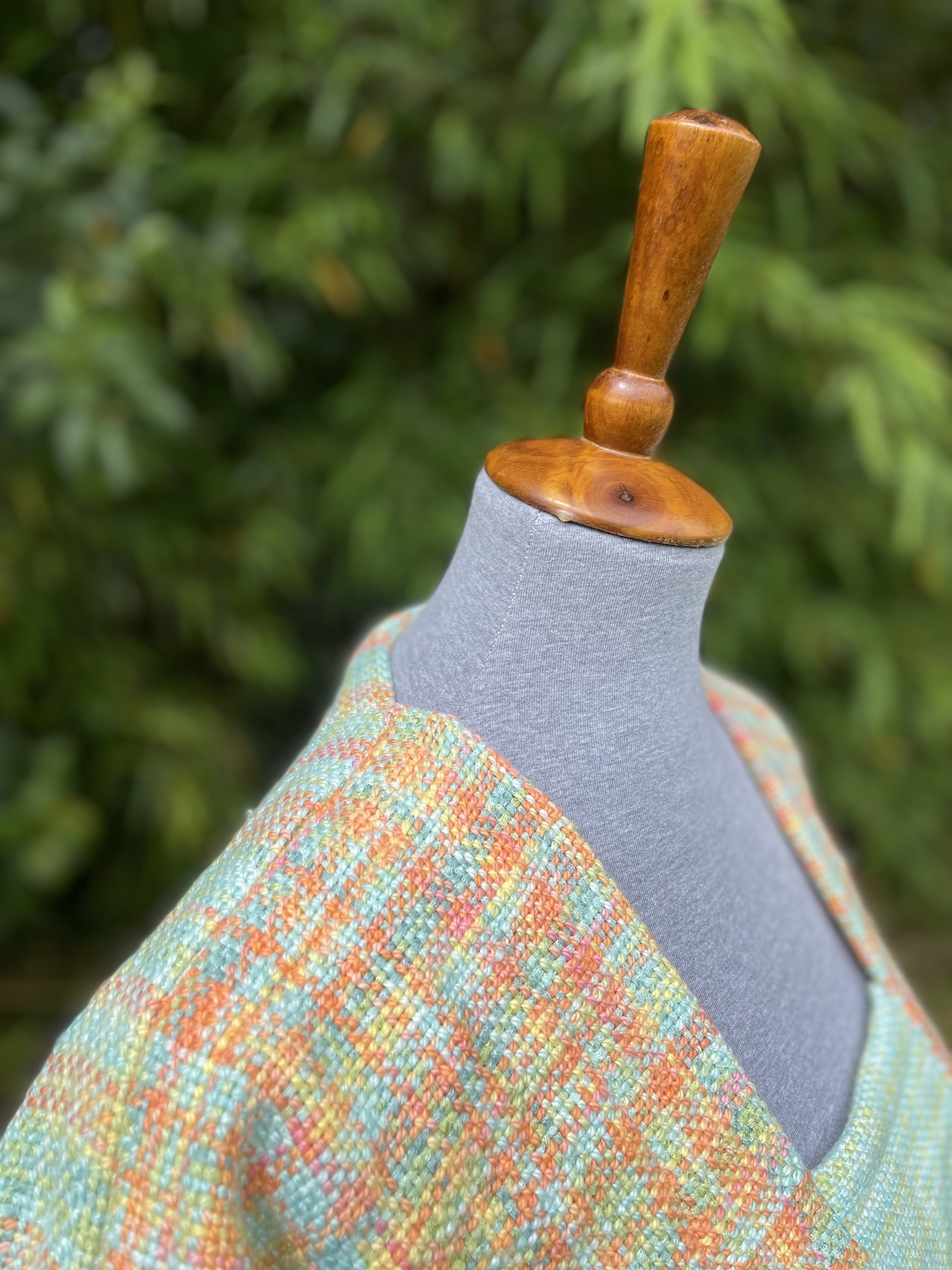Is sewing with your weaving too intimidating? It doesn’t have to be! Try this simple equation to create a comfortable spring time top that is perfect for just about any occasion.
My fabric was woven on a 16″ Kromski Harp Forte, but I could also have made a similar top using narrower panels from an 8″ Harp loom or the Presto Loom. I used four different yarns and as you can see in some of the photos, it left me with lots of yarn ends. However, they were woven in as I worked so they will not come out in the wash.
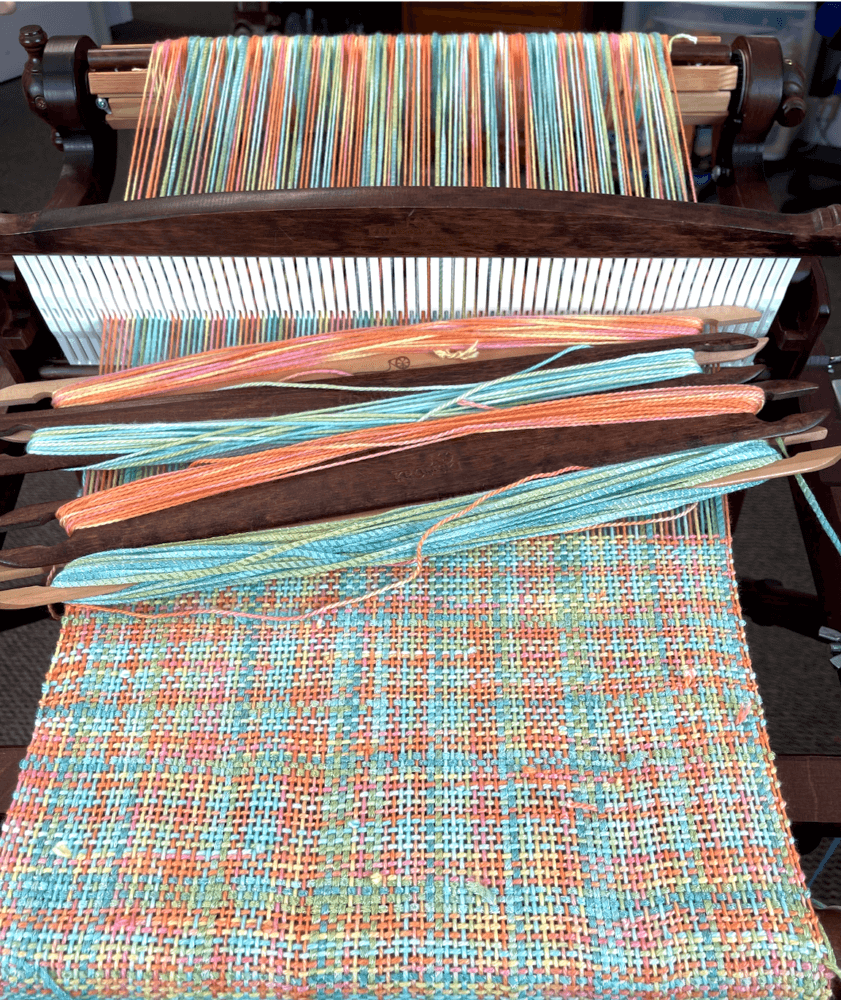
The shirt is constructed of panels. Each panel is woven based on measurements that you will take as described below. The salvage edges of the panels will make for quick seaming with nice pre-finished edges.
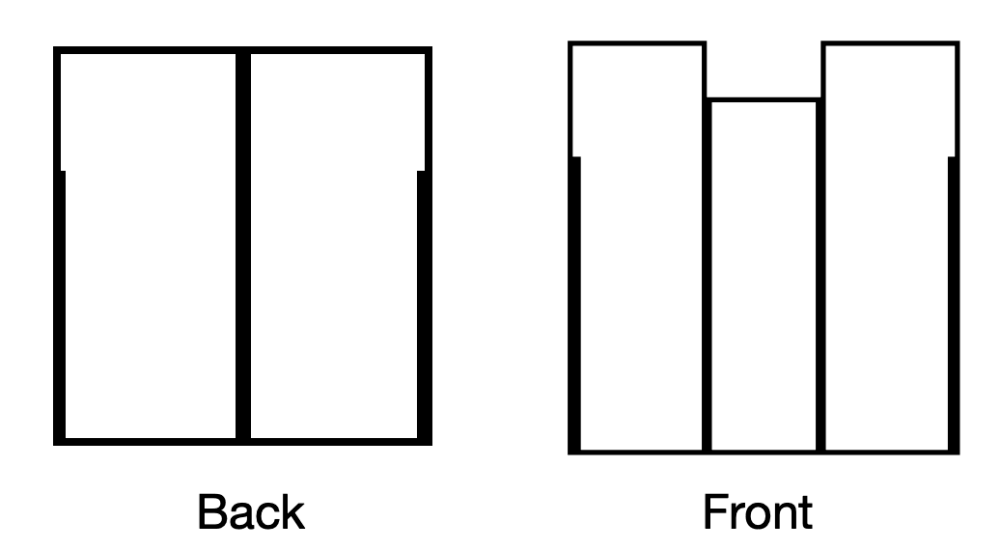
Begin by pulling out your favorite t-shirt – the one that fits just right. Lay it out and measure across from side to side (A) and shoulder to hem (B). Next measure across the back of the collar (C).
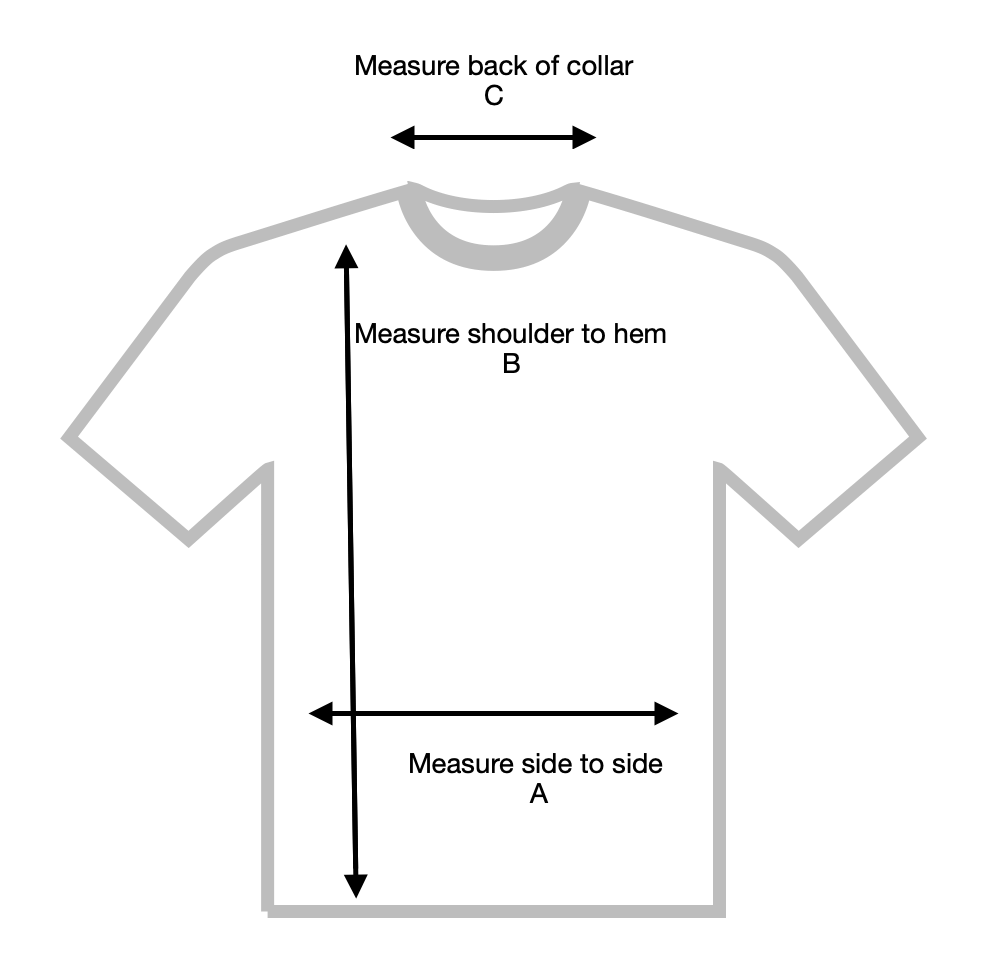
The shirt is constructed of three panels in the front. Two sides and one center.
Let’s start with the two side panels.
Subtract “C” from “A”. Now divide the result by 2.
For instance: 22 – 8 = 14. Then 14 divided by 2 = 7.
This gives us the two sides of the front measurements. We will then add our seam allowances. I figured 1/2″ allowance for each seam. So I add one inch to each panel width.
The length of the panel is determined by measurement “B”. Add 3″ for hem and 2″ for the shoulder seam to length of “B”.
Next multiply that by 2 so that you can weave both panels on one warp.
For instance: 24″ + 3″ + 2″ = 29″ for each panel. The woven length in the loom will be 58″.
The center panel is “C” plus the seam allowance of one inch. The length will be slightly shorter than the side panels, but I suggest weaving it the same length as the example above and adjusting the hem later. This will not need to be doubled since it is a single panel.
The back of the shirt is made of 2 panels. “A” divided by 2, plus seam allowance. Use the same method to figure the length of your warp as was done for the back sides.
Now that you have the basic measurements, don’t forget to add in the compensation for loom waste, take-up and shrinkage like you would any weaving project. If you are not using a yarn that you have used before, I highly suggest making a test swatch to determine the shrinkage amount. However, if the panels end up a bit wider than anticipated, all is not lost. You can simply open the seams and sew them down so that they lay flat within the shirt.
Once you have finished weaving you must wet finished the fabric, Use a washer and dryer for cotton and for wool, a lukewarm soak and dry flat.
Once dry, cut the longer warps in half to form the panels. Sew a zig zag stitch along these to secure.
Before sewing it is a good idea to clip or pin the seams together and test the size and layout. Hand woven fabric is less agreeable to seam ripping when a mistake has been made.
When you are satisfied that all is as it should be, it’s time to move to the sewing machine.
Begin by sewing the the back panels together along the selvage edge.
Lay the back out on a table, right side up. Next place the front side pieces on top of the back, right sides down. Align the shoulder seams so that the outside edges line up with the outer edges of the back. The zigzag edge will not hold up to repeated washings. Sew the shoulder seams about 2″ down from the top edge. This will allow the raw edges to be folded under like a hem and be stitched down, thus protecting the edge of the fabric.
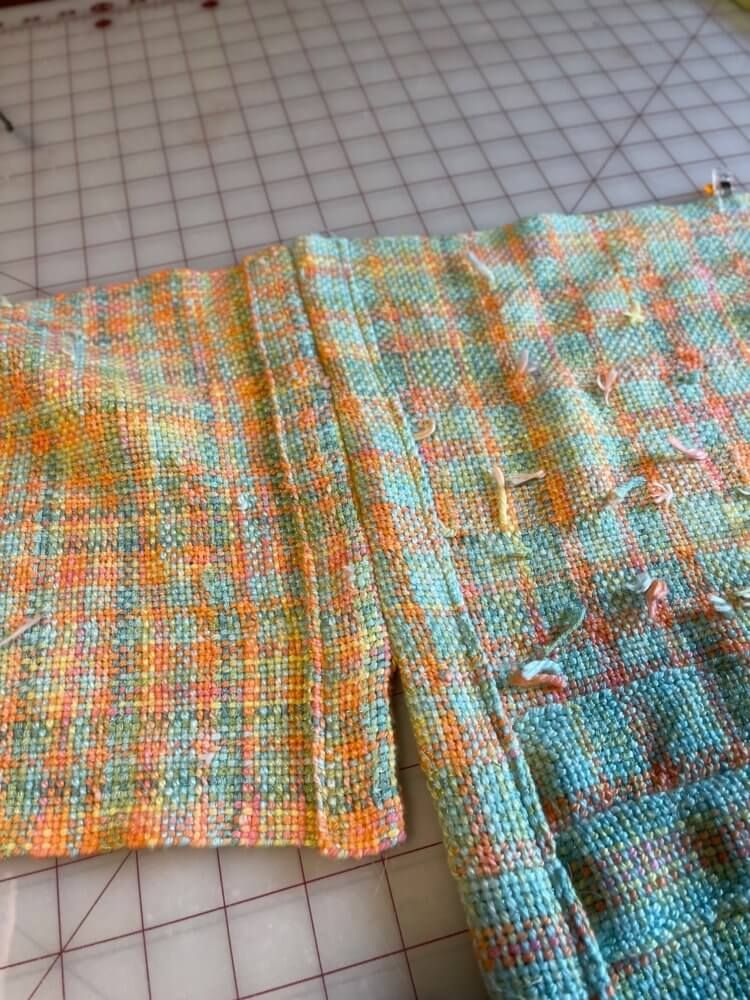
When both panels are in place, there should be a gap the size of measurement C (the neck). As you can see in the photo here, My panel was a bit wider, but I stopped sewing in time to leave the correct sized gap. This was easily solved by folding the extra fabric over and stitching it down in a later step.
At this point you’ll want to try on the bodice and pin the center panel in place before sewing it.
You will also need to mark the spot where the side seams should stop under the arms. Sew a back stitch at the top of each side seam so the armhole is nice and strong.
All that is left do do now is to hem your new shirt! And decide where to wear it first!
